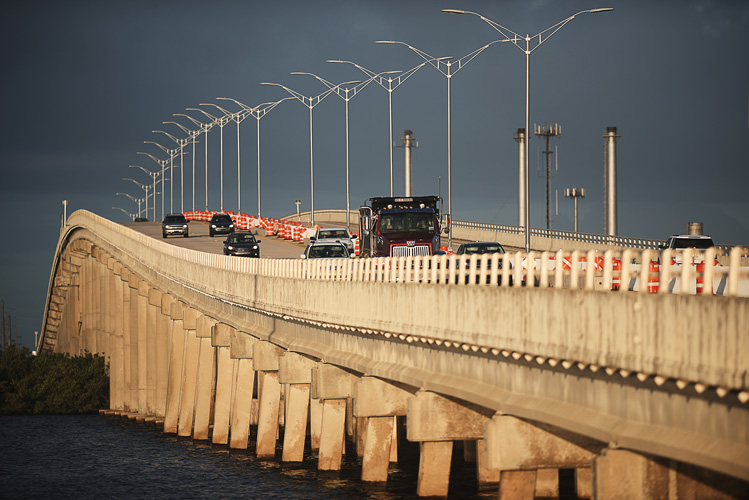
Nearly a year and a half into the epic 17th Street bridge repair project, the Florida Department of Transportation unveiled plans to keep crews working on the bridge, and on East Causeway Boulevard, through 2026.
Beginning in the summer of 2023, FDOT plans to embark upon a $12 million job replacing the eastern 400 feet of the bridge, sealing the entire deck of the bridge, and finally resurfacing and reconfiguring both the eastbound and westbound legs of the bridge, widening bike lanes to 8 feet, 3 inches.
Immediately following that effort, East Causeway Boulevard at the island-side base of the bridge will be milled and resurfaced as part of a $1.5 million effort. The center turn lane will be reduced a bit to provide for wider bike lanes to match those on the bridge.
FDOT will upgrade the lighting and signage at the intersection of Highway A1A and East Causeway Boulevard. That phase of the construction is expected to be complete by spring 2026.
The timing of those projects is only preliminary, as commencement hinges upon state contractors wrapping up the refurbishment of the spalling or cracked, flaking concrete that’s widespread on the supports of the bridge.
FDOT hopes the current structural repairs to the underside of the bridge will be completed by “the very beginning of June,” meaning June of this year, but by now dates from
FDOT are rarely taken seriously. When work was scheduled to commence in October 2020, the project was slated to take six months – three months for each side of the bridge – to be completed by about Easter 2021.
Work started two months late and is now nearly one year behind schedule, disrupting traffic for two busy tourist seasons after the bridge was found to be “structurally deficient” on inspection.
Explanations given by state officials have ranged from bad weather, to the concrete taking longer than expected to cure, to the job being more involved than anticipated, to the contractor folding its international construction firm five months ago, leaving FDOT stuck with dozens of projects in various states of completion.
The agency seems to be getting back on track with a new contractor, but only time will tell, as locals grow increasingly weary of sharing one side of the bridge with oncoming traffic.
It’s not only the closures but the construction barricades and barrels that are proving a pain to live and drive with. Indian Bay Drive and Bay Lane residents on the southeast end of the FDOT work area complained and submitted a petition to FDOT about the construction barrels which they say block visibility and cause accidents.
FDOT said during a 45-minute community meeting held at Vero Beach City Hall that those barrels will disappear in June when the structural repairs are completed. But for now, the eastbound side of the bridge is closed for repairs, requiring both eastbound and westbound traffic to use the westbound span of bridge.
FDOT engineers say the two new projects won’t be as disruptive. The state will work on one directional side of the bridge at a time, but only one lane at a time will need to be closed. For example, one eastbound lane will be closed and one left open while both westbound lanes remain open and undisturbed.
During a question-and answer period, one of the 38 attendees asked if FDOT was aware that Vero and the barrier island swell with tourists and seasonal residents all winter, and if so, why did the agency seem to dispatch crews to tear up busy thoroughfares, close lanes and reroute traffic at the worst possible time.
“These projects are funded during a certain time period. We will start when the funding is in. We really did not purposely disrupt the holiday winter season,” Project Manager Hong Benitez said.



